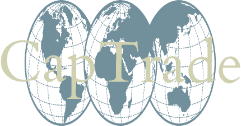Market Economy Refresher: The 80/20 Test
We have all been so immersed in non-market cases over the past few years, given the recent up-swing in market economy cases, it may not be a bad idea to refresh ourselves with regard to some of the USDOC’s basic-market economy methodologies. Let’s start with one of the more important – the USDOC’s 80/20 cost test.
Home (or third-country) market sales that fail the “Cost Test” – i.e. are made below cost in substantial quantities over an extended period of time – are not used in the calculation of HM weighted-average net prices compared to US net prices for the purpose of antidumping margin calculations. The USDOC determines which HM sales pass or fail the cost test using its “80/20 test”. First, for every HM sale, it compares the weighted-average total cost of production of the product across the POI (or POR) with the net price of the individual sale to determine if the individual sale was made above or below cost. The USDOC next aggregates the results on a CONNUM-specific basis. For CONNUMs where more than 80% of the HM quantity sold has a net price greater than or equal to the total cost of production, all sales of the CONNUM “pass” the cost test and are retained in the margin analysis. For CONNUMs where 80% or less of the HM quantity sold has a net price greater than or equal to the total cost of production, the USDOC retains in the margin analysis only those sales of the CONNUM where net price is greater than or equal to the total cost of production. Sales where the net price is less than the total cost of production “fail” the cost test and are excluded from the analysis as sales outside the ordinary course of trade.
Consider the example below which demonstrates the math of the 80/20 test, assuming both a result of 80% and less (Scenario 1) or above 80% (Scenario 2) for CONNUM “A.”
**Insert tables**
